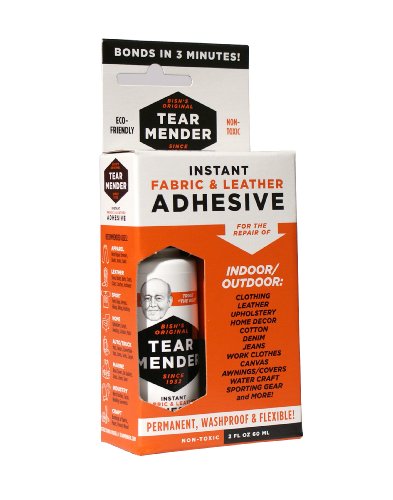How to fix car roof lining without removing
by Chris Lewis.
A quick fix for a leaky roof is to put some duct tape on the leaking area. This can be done without removing the lining of your car roof. The best way to do this is by using your hand and pushing down on each side of the tape before you remove it from its backing, then press it onto the roof with pressure.
Just a few simple tools and a few minutes of your time can fix car roof lining without removing. Anybody who has ever owned a car knows that the interior fabric on the inside of the car's roof is one of those things that just doesn't last forever.
Contents
The sun, rain, snow, ice and wind all contribute to wear-and-tear which ultimately leads to sagging or even tearing from what was once an immaculate headliner. Fortunately for you, there are ways to repair it without having to remove them! Here are some easy steps for fixing your car roof lining with minimal effort:
- Clean the area where the roof lining is coming off
- Apply a thin layer of adhesive to the roof lining and press it firmly into place
- Use a hairdryer or heat gun to help bond the roof lining to your car's metal surface
- Move around until you find an even spot for all pieces of your car's roof lining
- Allow time for drying before testing out your new repair job.
Car headliner repair glue

A lot of people don't know this, but the headliner in your car is actually a very important part. It covers up all the stuff you want to keep hidden like the wiring and insulation. The only problem with that is that it's made out of fabric or vinyl (depending on what year your car was made).
And unfortunately, these materials wear down over time. When they do, you're left with exposed wires and insulation which can be dangerous for both your safety and electrical system. So if you've noticed any tears or holes in your headliner lately, take care of it right away! Put some glue on those rips before they get worse.
Editors' Picks: Top Car Headliner Adhesives
- #PreviewProductRating
- Bestseller No. 1
- Bestseller No. 2
- Bestseller No. 3
- Bestseller No. 4
- Bestseller No. 5
- Bestseller No. 6
- Bestseller No. 7
- Bestseller No. 8
- Bestseller No. 9
Are you looking for a new headliner?
If so, then this blog post is for you. Here are the top five reasons that will help you decide on what type of glue to use.
- Headliners can be pricey and it is made of fabric which means it won't withstand high temperatures.
- You want something that dries quickly but also one that's easy to work with because there are many different ways of applying headliner glue.
- When your old headliner delaminates, cracks or has rips in it, then its time to replace it.
- The best way to avoid any unpleasant surprises is by doing some research on the products available before making a decision on what kind of glue you.
Do you have a car headliner that needs fixing?
The best option for repairing it may be to use glue. This is an excellent way for those who do not want to take their car into the auto body shop and spend hundreds of dollars on a new one. Glue will help seal up tears and holes in your headliner so it does not continue leaking water all over the inside of your vehicle.
What causes a car headliner to sag?
The last thing you want to do is stop and pull over on the side of the road because your headliner has sagged. The first time this happened, I pulled my car into a parking lot. My husband got out and started poking around under the dash, checking for any loose wires or cables that might have been hanging down from underneath. We found nothing so he climbed up onto his hands and knees to see what was going on from below - only to find a huge hole in the roof! It turns out that we had just bought a used car with an existing problem: A leaky sunroof. An easy fix but one which cost us $600 worth of water damage repair work that needed to be done before we could move back.
A sagging headliner can be caused by many things, such as a cracked windshield or an old roof. The best way to tell if the cause is due to wear and tear or something else is to take a look at the material.
How long does it take to replace a headliner?
Headliners are the very fabric of your car's interior. They provide protection from sun, rain and other weather conditions while also providing insulation for the driver and passengers. But what happens when they start to wear out? A headliner replacement can take as little as a few hours or up to several days depending on the size of your vehicle. That being said, it is always best to have this job done by professionals who know how to properly install new headliners with all their complex parts in place so that you don't have any unforeseen issues down the road.
- It usually takes about 3 hours to replace a headliner
- The cost of replacing a headliner is $150-$250, but varies depending on the make and model of your car
- You will need to remove all the trim pieces around the roof lining before you can even get at the headliner
- There are many different types of materials that can be used for a new headliner, including fabric or vinyl; it's up to you which one you prefer!
- This project should only be done by an experienced professional because there are certain safety precautions that need to be taken when working with hot glue guns and other tools involved in this process
- It's always best to have someone help you if possible so they can hold things down while you work on them - just don't forget your goggles.
The amount of time it takes to replace a headliner depends on how skilled you are at DIY. It can take anywhere from an hour to six hours, depending on the experience level of the installer.
Conclusion on fixing car roof lining
Whether your vehicle's roof lining is torn, faded or just plain old, you can get it fixed without removing the headliner. The first step to fixing car roof lining is cutting out a piece of fabric that matches the material and shape of the original upholstery. Next use contact cement on both pieces of fabric before pressing them together with an iron set at medium heat for about 10 minutes. Let them dry overnight and then staple in place using staples 1/4 inch apart from each other all around the edges. Finally cut off any excess cloth overhanging past one side's edge so it doesn't show when looking through your windshield. Once finished, enjoy driving again while knowing you're not only protecting yourself but also following.
 |
 |
 |
 |

About Chris Lewis.
Chris Lewis is a passionate individual with a deep affinity for the world of automobiles. From a tender age, his fascination with cars was nurtured by his father, a seasoned mechanic based in the vibrant city of San Francisco. Growing up under the watchful guidance of his skilled father, Chris developed an early aptitude for all things automotive.
Thoughts on "How to fix car roof lining without removing"
 |
 |
 |
 |
Get FREE Filters now. Or latest free tools from our best collections.
Disable Ad block to get all the secrets. Once done, hit any button below
 |
 |
 |
 |








